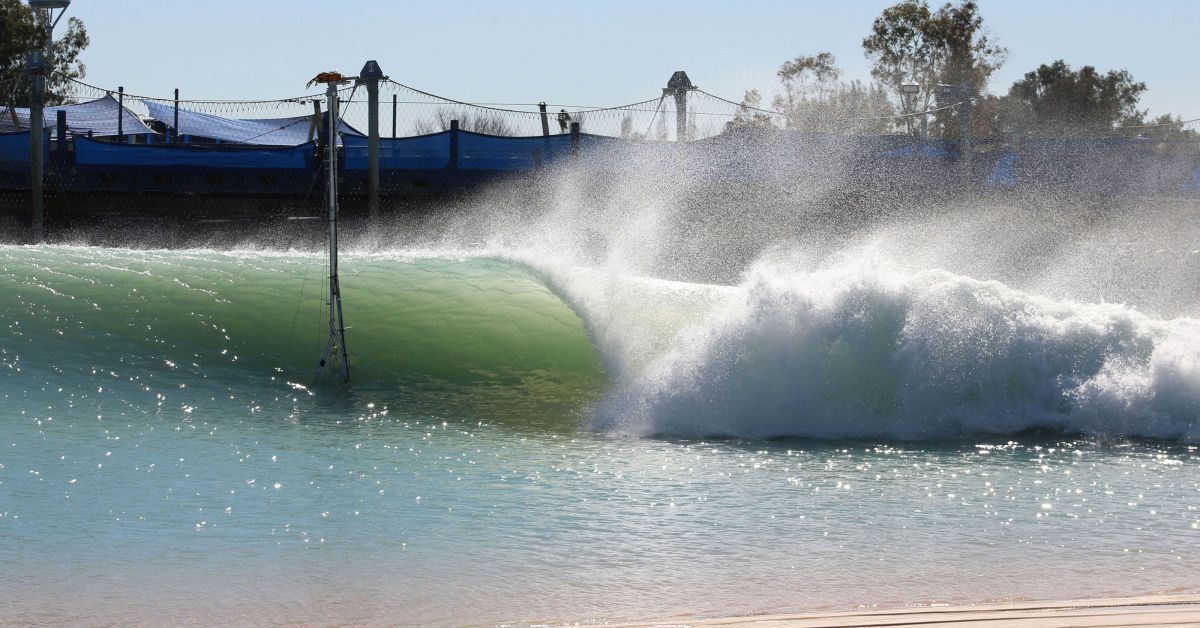Scientists and Surf Organizations Confirm What Surfers Already Know
Study at Kelly Slater Wave Company Surf Ranch demonstrates that wind effects on breaking waves can significantly influence nearshore processes
Published Date
Story by:
Media contact:
Share This:
Article Content
Scientists at Scripps Institution of Oceanography at UC San Diego and colleagues have found that offshore wind (blowing from land to sea) tends to encourage development of the tubular barrel waves favored by advanced surfers.
Onshore winds, those blowing from the ocean onto land, instead tend to contribute to “spilling” breaking waves in which whitewater cascades down the faces of waves resulting in lower levels of turbulence generation.
Beyond what this means to surfers, the strength and direction of the wind interests scientists in how it influences nearshore ocean physics. Wind influences how breaking waves generate, and subsequently how sand is picked up from the seafloor under breaking waves. Ultimately wind-effects on waves may play a role in what beaches and surf zones look like. “Wave models to date have not included these wind effects,” said Scripps Oceanography coastal physical oceanographer Falk Feddersen, who led the study.
“Surfers know when wind is offshore, the surf is generally better than onshore,” Feddersen said. “This is common surfing wisdom, but it has not been something that has been scientifically studied.”
The analysis, which appears in the Journal of Fluid Mechanics, is co-authored by scientists from the University of Southern California (USC), the U.S. Army Corps of Engineers (USACE), and the University of North Carolina at Wilmington (UNCW) as well as scientists and engineers from the World Surf League and its subsidiary the Kelly Slater Wave Company (KSWC).
The KSWC operates the Surf Ranch, a recreational surfing facility, in Lemoore, Calif. In 2019, the research team instrumented the Surf Ranch wave basin to record breaking waves using mounted cameras, uncrewed aerial vehicles, and light detection and ranging (LIDAR) technology to observe the shape of breaking waves. The researchers also measured the strength and direction of the wind.
Offshore and onshore winds, they concluded, change the distribution of pressure on the surface of the wave, changing its shape as it breaks.
“It is remarkable to see a facility built exclusively for recreational surfing being used as a scientific instrument. The controlled environment and repeatability of the waves were of prime importance to this function,” said study co-author Adam Fincham, chief scientist of the KSWC and also a researcher at USC.
Feddersen noted key support for the research from the Mark “Marko” Walk Wolfinger Surfzone Research Fund. The fund was created by the Wolfinger family to honor the memory of Marko, an avid surfer from La Jolla, Calif. In addition, funding for USACE participation in the experiment was provided by the Coastal and Ocean Data Systems Program.
Other co-authors of the study were Katherine Brodie of USACE; Adam Young, M.S. Spydell, and Kentaro Hanson of Scripps Oceanography; Michal Pieszka of the World Surf League; and Derek Grimes of UNCW.
Share This:
You May Also Like
Stay in the Know
Keep up with all the latest from UC San Diego. Subscribe to the newsletter today.




